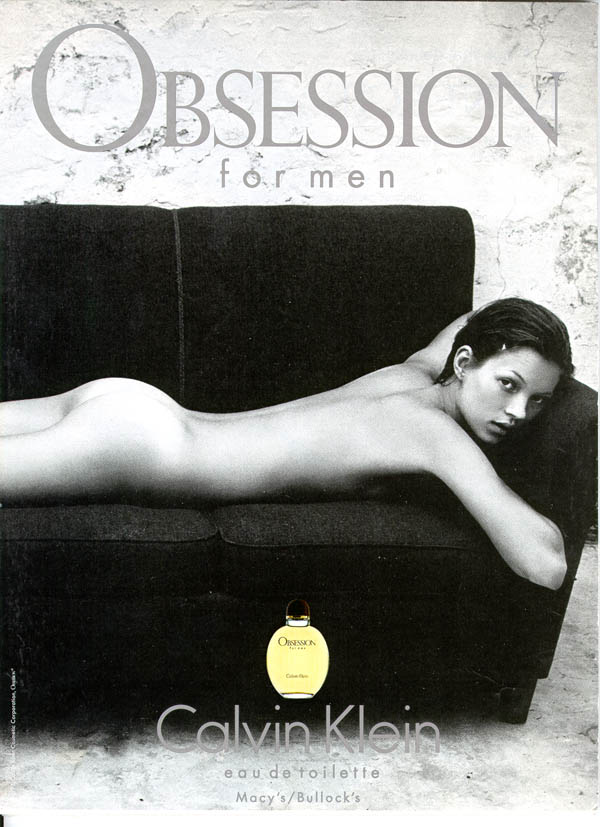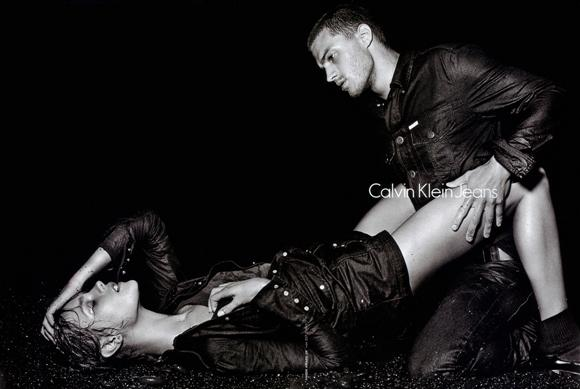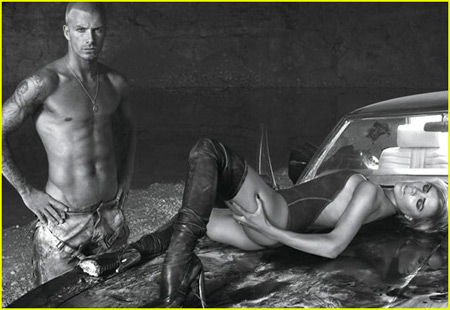Introduction
In all displays and dimensions, people are surrounded by different images, paintings, billboards, advertisements, illustrations, posters, and photographs. They are depicted and conveyed in different ways and all of those methods imply the use of unique techniques and material. All this encapsulates and presents the visual culture of the past and the present. More importantly, each image brings some message to people who ‘read’ it and comprehend it differently as well.
In general, images serve to construct complex ideas, feelings, and values, moods, and atmosphere. Addressing modernity, the techniques have evolved and changed, but the main function of images – to render the meaning – remains. The advent of modernism has given the rise of fresh and protested expression of concealed desires and ambitions of people, which continues to impregnate fresh and even audacious ideas of the artists striving for originality.
The modern art of photography is a real calling to the art of imaging and depiction. It is not only a means of the perpetuation of the human experience but also a symbolic presentation of how modernity has influenced human perception. Finally, it is the confrontation of modernism flows with monochrome life and photographs that serve to liberate people from those constraints. The significance of photography remains advantageous, as this is a unique technique for the presentation of a precise moment in time.
“The click of the shutter captures a moment of time that is immediately past but is nonetheless the closest thing there is to a knowledge of the present” (Mirzoeff, 1999, p. 69). On the example of particular images, it is possible to catch the breath of modernity and perceive the influence of time. To decode the meaning and establish the real intentions of the photographer, it is necessary to analyze the images through the perspective of popular culture, the concepts of originality and appropriation, realism, and truth.
Low, High, and Popular Culture
At present, there is a subtle distinction between the concept of low and high culture, due to the continuous appearance of new trends. This especially concerns the presentation of different types of visual culture. Originally, the term low culture refers to the identification commonly applied to the forms of popular culture, which is regarded as cheap, vulgar, derogatory, and garnish (Wells, p 180). The recent interpretation of the terms has acquired other associations thus addressing the “ironic preference of an educated middle class for objects and images usually dismissed as low culture” (Wells, 2004, p. 180).
The concept of popular culture is often confused with mass culture definition. However, these notions are not identical. As Strinati (2004) states, “we can say that mass culture refers to popular culture which is produced by the industrials techniques of mass production, and marketed for profit to a mass public of consumers.” (p 10). It means that mass culture is created on the account of commercial support since creativity and aesthetic are impossible to achieve without conditions dictated by the principles of mass production. If it is so, then, a question arises: can low culture belong to mass culture?
The answer is ambiguous since, on the other hand, the main goal of low culture is to attract people’s attention, it is a kind of protest to classical images of art. On the other hand, mass culture is a means for controlling people and for influencing their tastes whose main function is to create demand. The audience, then, is perceived as passive consumers subjected to the manipulations of mass media products. As an example, the reality TV show What Katie Did Next (Price, 2009) reflects the debasement of moral and aesthetical awareness thus lacking intelligence and delicacy.
It is hard to deny the role of fashion and trends in the modern perception of culture, and visual culture in particular. Therefore, exploring such theoretical concepts as low and high culture, one cannot but include the importance of fashions as a powerful tool of communication between the creator of fashion through images and the receiver of the creator’s message. In addition, the modern perception of fashion is closely intertwined with the matter of gender, social identity, and life philosophy. However, there is a false assumption to affiliate fashion photographs to the low culture, which should be distinctly differentiated from the high culture.
Originality and Appropriation
There is an assumption that art is aimed at achieving the expressiveness and value of originality. The accepted belief exists that the work of art serves to express the individuality and authenticity of the creator. The same could be expressed in other kinds of art like photography and clothes design where the extent of originality cannot be limited. Nevertheless, the twentieth century has changed the concepts and impressions of originality predetermined the culture of mass production (Lewis and Lewis, 2008, p. 33).
Among the recent trends, the core one has become imitation and experiments. For example, the creative work and originality of Jackson Pollok’s works lie in the abstract painting that has no connection with reality (Emmerling, 2003). In general, the socially and culturally predetermined elements of imitations and tradition are now the major principles of creativity. However, the innovative techniques used in achieving originality cannot sign the creativity but a method of disguise (Sawyer, 2006, p. 25).
As the concepts were changing, the means of art were changing as well. The shifts in perception and delivery of the art product were largely predetermined by different historic and cultural situations. Concerning photography, this art has undergone numerous historical conditions fostering the appearance of different modern movements and trends like naturalistic photography, pictorialism, abstract expressionism, surrealism, and experimental photography.
For instance, pictorialism was an aesthetic photographic movement that sticks to the technique of emulating the painting. This trend also involves the usage of unconventional techniques. With the evolution of this genre, the concept of originality and the aspiration to highlight their creativity has been further captured by other appearing trends, specifically impressionism (Marien, 2006, p. 162). All these photographic styles are also differentiated by their message and inter-textual encoding and interpretation of images and photographs.
Based on the above the concept of inter-textuality can be described as envisioning of relations of objects on the photo or image. With the help of “reading” this information, it is possible to reveal the main idea and scope of the image and photography. In particular, while viewing images 1, 2, and 3. It is possible to “read” the contemporary lifestyle of people, their behavior, and the relations between a man and a woman. Through the expressional analysis, it is also possible to sense the commercial information advertising clothes, which become an important means of self-expression.
Realism and Truth
As it has been mentioned, the initial function of photography consists in perpetuating the time and the real. However, the rise of digital media and her abilities to create, edit and manipulate images has given rise to numerous contradictions concerning the nature of photography that has been invaded by popular culture. The introduction of new techniques and constant striving for innovation has dinted in the current understanding of “the real” (Wells, 2004, p. 73).
This is why not all photographs encapsulate the veritable meaning of the real, but a means of controlling and manipulating the objects thus turning the reality into illusion. The distortion of reality in photography has become the main purpose of the contemporary art of photography. I was embedded in the modernist movement and surrealism in particular. The style owes to Freud’s theory of unconsciousness, the method that uncovers a person’s desire and unfulfilled dreams (Marien, 2006, p. 253).
Surrealism stands for reforming human perception and experience through the prism of inside imagination. The same can be viewed on the photos in Appendix 1 which comprise the notes of rejection of reality but the acceptance of the so-called hyper-reality. In this respect, the image with Kate Moss disclosing the concealed desires and dreams of people; also implicitly reveals the concept of freedom and easiness of perception. Apart from this, this picture can be also viewed through the prism of popular culture that dictates people new modes of behavior and relations thus shaping the new reality where people are manipulated and controlled. However, the truth value of photographs has not expired but discovered in particular genres like photojournalism and documentary.
Image and Gaze: Voyeuristic Looking
Theory on photography has also applied the use of psychological and analytical theory to study how the image construct females as an object for a male gaze (Wells, 2004). In this respect, the concepts of voyeurism, as visual pleasures of looking and as a tool of power, have been devised by psychoanalysts. But originally this term was invented by Sigmund Freud who viewed “the visual pleasure in terms of his or her subjectivity which is shape from early childhood” (Wells, 2004, p. 170).
This pleasure of looking is commonly comprehended as an erotic pleasure achieved by looking at another image with human bodies. This is why photography more or less involves voyeuristic looking at the picture depicting the taboo activities. At the current moment, voyeurism applies to sexualized and erotic images. The same tendencies and theories are embedded in the images under consideration that depict the open and undisguised sexuality and, at the same time, the veiled reality, the one that is longed for by people. When addressing the topic of pleasure of looking, it is possible to address the interpretation of the male gaze.
Hence, she narrates the male gaze: “In a world ordered by sexual imbalance, pleasure in looking has been split between active/male and passive/female” (Baldwin, 2004, p. 383). This statement is true but partially since we live in the era of gender equality where women can be regarded as active as well.
Conclusion
Concluding, photography can be considered to be the art of perpetuating the objects in time. It has contributed to the art of depiction where a person is entitled to see what is beyond reality. Therefore, photographs as an inherent part of visual culture can perform the function of control, of depicting the truth, of revealing the unconscious desires of people. They can be also considered as original art, where creativity is achieved employing the application of various artistic techniques. Finally, the art of photography represents the concept of voyeuristic looking, as another theoretical explanation of modern movement.
Reference List
Baldwin, E. 2004. Introducing cultural studies. US: Pearson Education.
Immerling, L. 2003. Jackson Pollock: 1912-1956. Cologne: Taschen.
Lewis R., and Lewis, S. I. 2008. The power of art. US: Cengage learning.
Marien, M. W. 2006. Photography: a cultural history. US: Laurence King Publishing.
Mirzoeff, N. 1999. An introduction to visual culture. NJ: Routledge.
Price, K. 2009. What Katie Did Next. USA: Pricey Media.
Sawyer, R. K. 2006. Explaining creativity: the science of human innovation. US: Oxford University Press.
Strinati, D. 2004. An introduction to theories of popular culture. NJ: Routledge.
Wells, L. 2004. Photography: a critical introduction. NJ: Routledge.
Appendix 1


